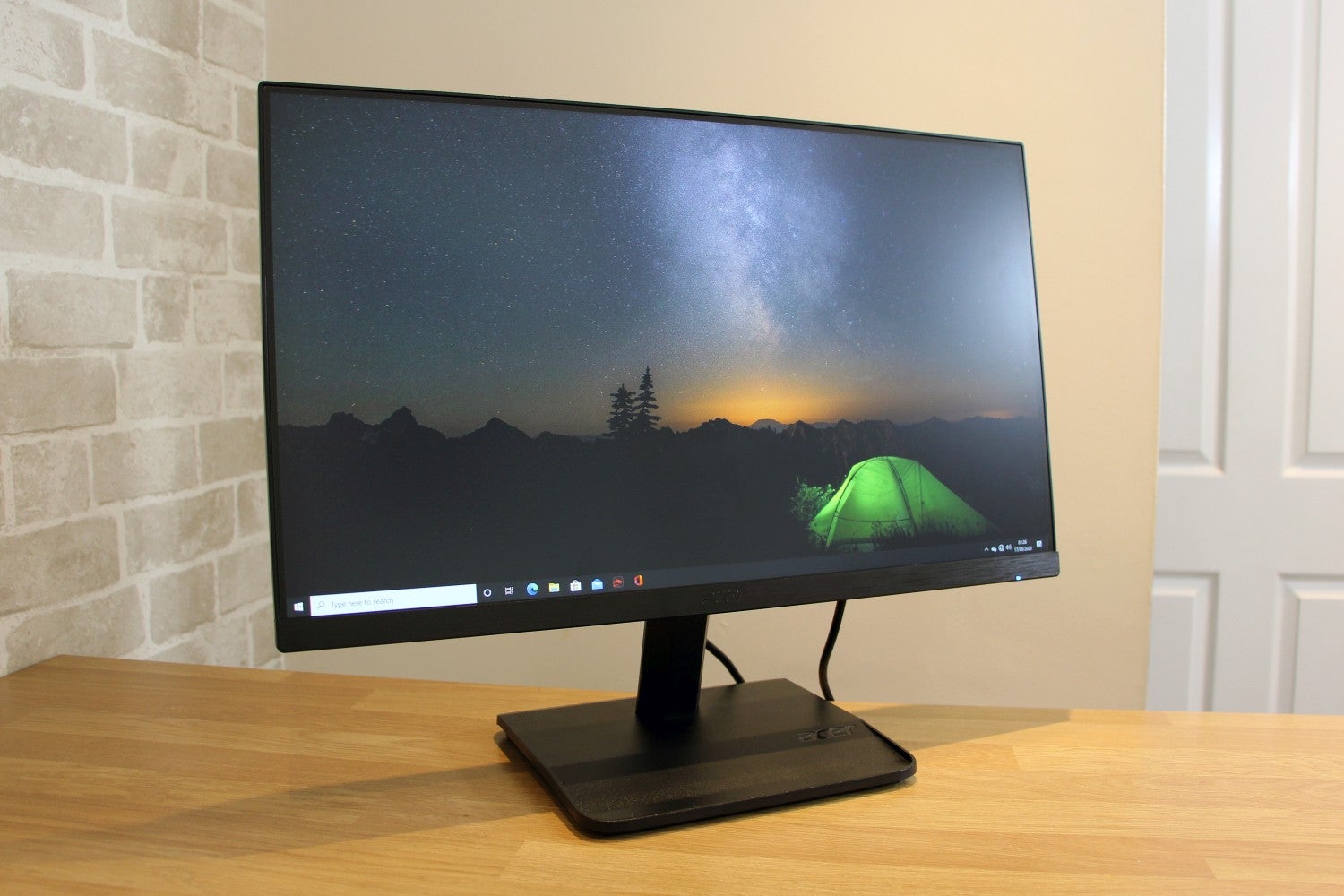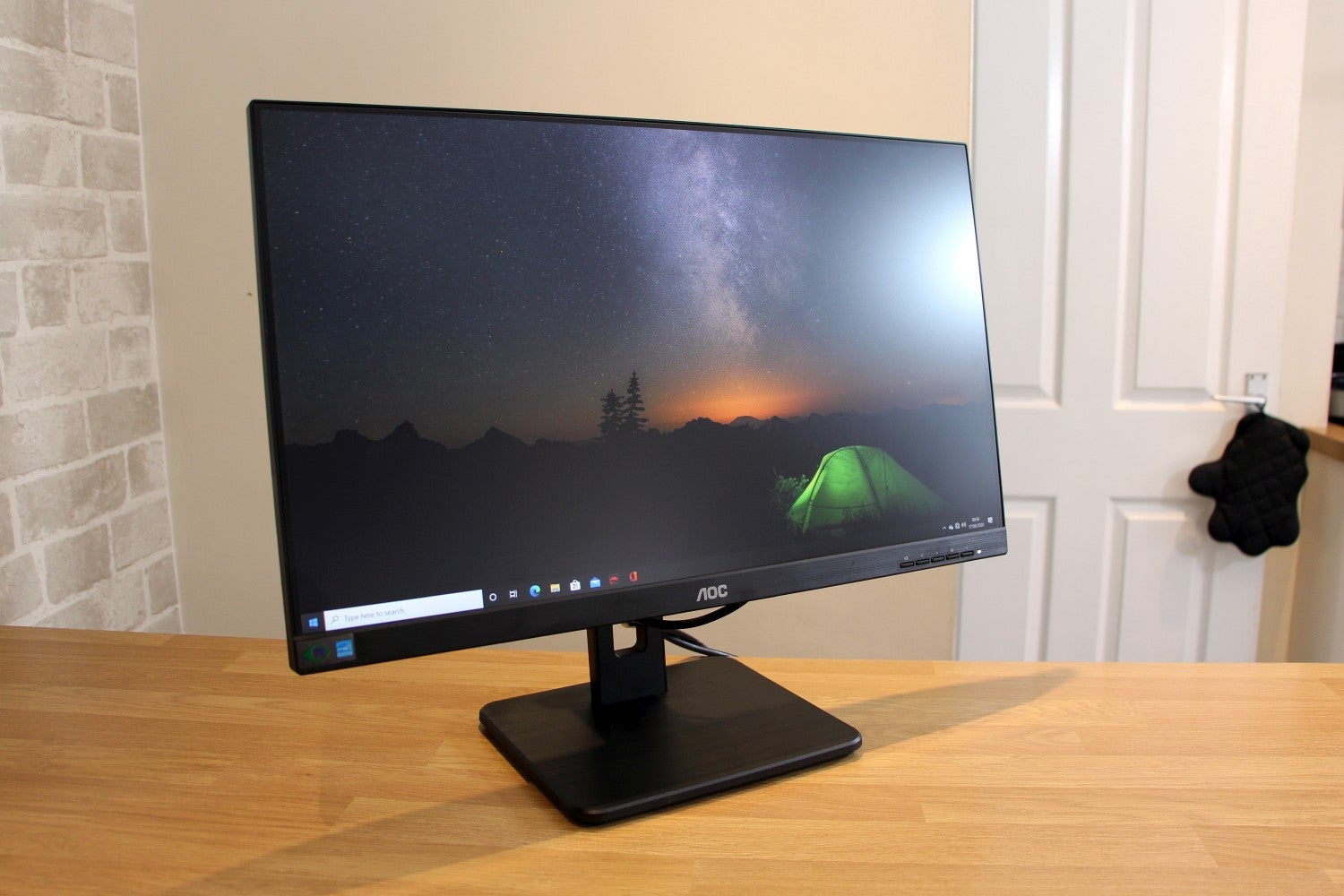
The world of monitors is quite a vast one, so picking out the best monitor for what you need is quite a difficult task, just given the sheer quantity of options out there for a range of different use cases.
This is where we’ve decided to step in and help you out. Our team of experts test a wide variety of monitors every year, ranging from clever all-round options to more specialist panels for intense design work. Based on these tests and the associated reviews, we’ve put together this list of our top picks.
Of course, not every monitor is going to be worthwhile for everyone, so we’ve made sure to pick out a good variety of options for people to get behind. This includes colour-accurate panels with vibrant colours and high resolutions for intense design work, as well as more general all-round monitors with some clever features that are marvellous for productivity.
We’ve also focused on the most important things people look for when buying a monitor. This can range from how good the display’s colours are, and how bright it is to the variety of ports on offer, and their general design.
To get the best results, our team of experts has made each minute their main display for a week and come to conclusion based on real-world experience as well as with accurate tests using expert equipment such as colourimeters. Of course, it isn’t worth splitting hairs over small differences in Delta E numbers and the like, but it can be interesting to note where each monitor sits within the frame of benchmarks if they’re important to you in your respective buying decisions.
If you can’t see a monitor you like just yet, be sure to bookmark this page for the future as we’ll be updating it with any more top candidates that pass through Trusted Labs throughout the course of the year. You may also want to check out our list of the best gaming monitors, if you’re after something for all your PC gaming needs.
How we test
We use every monitor we test for at least a week. During that time, we’ll check it for ease of use and put it through its paces by using it for both everyday tasks and more specialist, colour-sensitive work.
We also check its colours and image quality with a colorimeter to test its coverage and the display’s quality.

Samsung Smart Monitor M7
Best overall monitor
Pros
- Versatile monitor that can also be used as a smart TV
- Solid performance for home office workers
- TV mode makes it an ideal option for people in small or shared acommodation
Cons
- Not a great fit for gamers or creatives
The Samsung Smart Monitor M7 is a versatile choice to pair with your PC, and represents one of our favourite all-round monitors.
What’s especially clever about the Smart Monitor M7 is that it’s not only a monitor, but also is able to be used as a 32-inch 4K smart TV, complete with Tizen OS. We found this to be an especially useful function during testing, and offered an excellent user experience in line with Samsung’s full-fat smart TVs, as opposed to this quasi-monitor-television.
We found the 32-inch 4K panel to offer up a decent all-round experience to offer up good brightness and colours, as well as dynamic imagery, which will definitely suffice for generalists wanting a versatile and capable monitor. In addition, the fact it features HDR10 causes supported content to look noticeably punchier.
Where the Smart Monitor M7 really shines though is with that versatility, and the wealth of features on offer alongside the fact this is a multi-function panel. The integration of both Samsung SmartThings and DeX for Galaxy phone owners was especially welcome, and unlocked the potential of the Smart Monitor M7 even more so than before. SmartThings is handy for streaming your phone screen to the monitor, while DeX allows you to use your Galaxy phone as a portable computer of sorts in a desktop-like fashion.
The design of the Smart Monitor M7 is nice too, with an understated look that’s helped along by the thin bezels. It looks to have been designed to be as innocuous as possible, so as to fit in with practically any setup. This could also be seen to contribute to the monitor’s wide appeal, given it’ll look great wherever it’s placed.
Reviewer: Alastair Stevenson
Full review: Samsung Smart Monitor M7 review
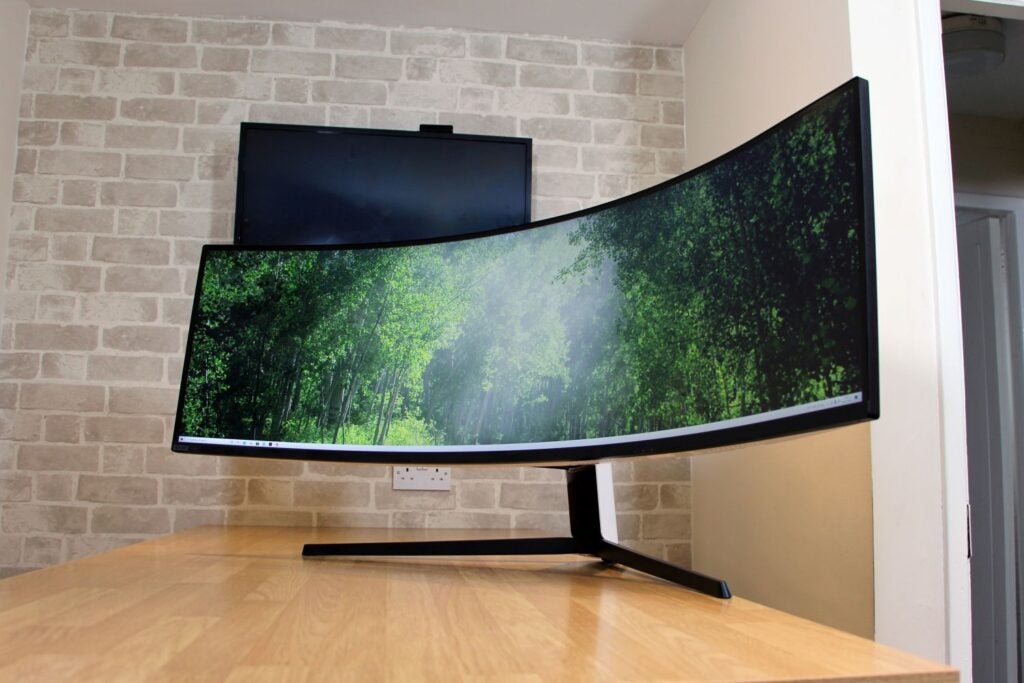
Samsung Odyssey Neo G9
Best curved widescreen monitor
Pros
- Show-stopping HDR and SDR ability
- Bold, accurate and vibrant colours
- Excellent refresh rate ability
- Immersive curved widescreen design
Cons
- Wallet-busting price
- 32:9 aspect ratio won’t suit everyone
- Requires a powerful graphics card
- Connectivity could be improved
The Samsung Odyssey Neo G9 is superb option if you want the powers of a curved, widescreen monitor. While the Neo G9 has been designed with gamers in mind, our testing shows it to be a great luxurious option for productivity and content creation too.
We found it to offer a stellar image quality, both in real-world usage and with our trusty colorimeter. As a Mini LED-backlit panel, it offers some immense brightness over a vast 49-inch panel. In testing, we measured over 2300 nits with Dynamic HDR enabled, and also found it to be an incredibly colour-accurate panel thanks to a Delta E score of 1.9, and wide colour space coverage including 99.5% sRGB and 91.5% DCI-P3. This makes it a brilliant option for processionals working with colour-sensitive digital art, photography and videos.
For the gamers out there, the Neo G9 features a 240Hz refresh rate which we found to offer some marvellously smooth gameplay, and there’s also 1ms response to ensure no real input lag. Do note though, if you do want to take full advantage of the Neo G9’s capabilities, you will need a powerful GPU.
The Neo G9 is also a good-looking monitor, with a sleek outer frame, complete with slim bezels and a glossy white plastic back. As a large ultrawide panel though, this isn’t really a monitor for those with smaller desks. But if you want to multi-task with multiple windows at once, or crave an ultra-immersive gaming setup, this monitor is well worth considering.
Reviewer: Mike Jennings
Full review: Samsung Odyssey Neo G9 Review
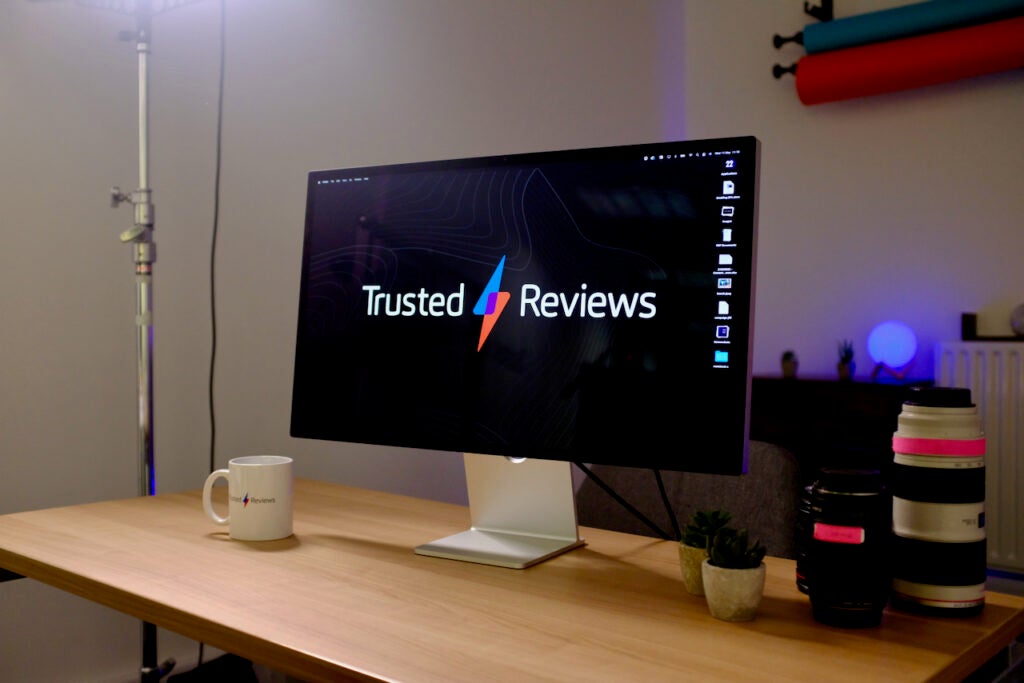
Apple Studio Display
Best monitor for Mac
Pros
- Excellent 5K image
- Complete setup with integrated speakers
- Mics and webcam
- Sleek design
Cons
- Expensive
- Lacks proper HDR support
- Not great for Windows owners
If you’re hunting for a monitor to use with your Mac or MacBook, then the Apple Studio Display is a logical, and indeed powerful, choice.
We found it to be one of the best-looking monitors we’ve ever reviewed, thanks to an professional aesthetic that sits well alongside Apple’s equally pro-grade laptops and desktops. It features an aluminium construction, complete with the typical Apple-like precision we’ve come to expect. There aren’t any controls on the monitor though, which means you have to control the Studio Display using the connected device.
The Studio Display is a feature-packed panel, complete with some fantastic sounding speakers, a built-in webcam and even the internals of an iPad with an A13 Bionic chipset and 64GB of storage. We did find that connectivity to Windows laptops to be difficult, which presents the idea that the Studio Display is only designed for Mac users. If you want a Windows-based equivalent, you’re better off looking elsewhere.
As for the display itself, the Studio Display offers up sharp images thanks to a 5K resolution. We found it’s an adequate LCD panel for Mac users that offers similar tech to pro-grade offerings from a few years ago. With 600 nits of brightness, this is a vibrant panel with great colour accuracy too. But it lacks the punch of a Mini LED display, as well as the powers of Apple’s ProMotion tech that offers up a 120Hz refresh rate to ensure smoother scrolling.
At $1599/£1499, this is an expensive choice, but if you’ve got your heart set on having a capable panel to pair with your Mac, then the Apple Pro Display should serve you well.
Reviewer: Max Parker
Full review: Apple Studio Display review
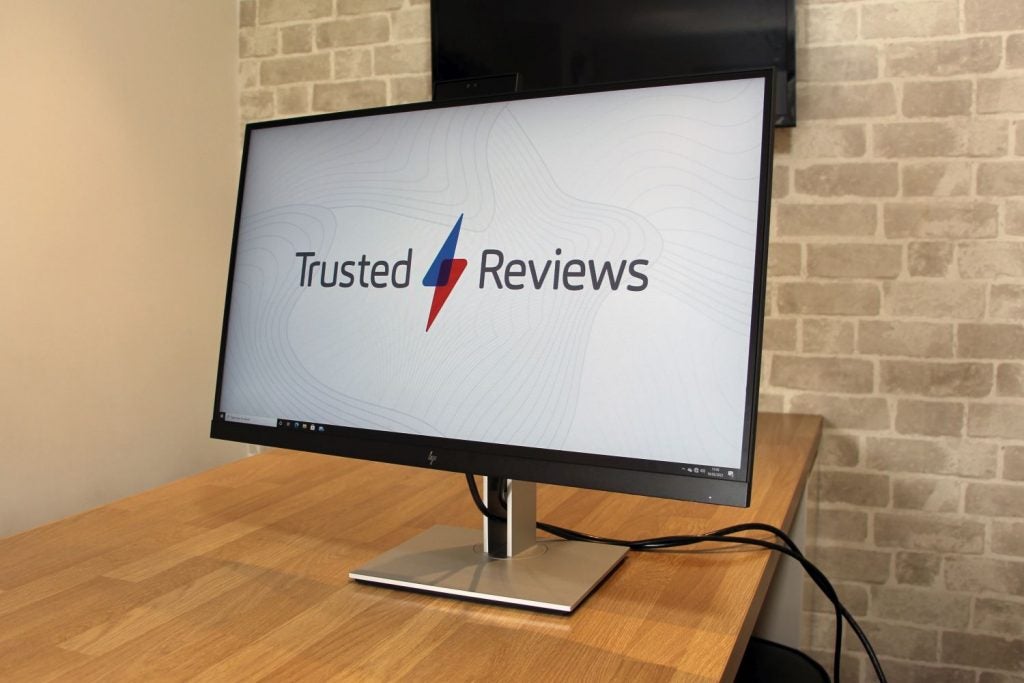
HP E27d G4
Best monitor for connectivity
Pros
- Loads of USB connectivity
- Ample adjustment options
- Good everyday image quality
Cons
- Expensive
- Can’t handle creative work
- Mediocre build quality
The HP E27d G4 is one of the best monitor options if you’re somebody that needs a shedload of ports.
We found its connectivity options to be excellent, with DisplayPort, HDMI, USB-C, USB-A, Ethernet and audio jack connections all featuring. This provides plenty of ports for you to connect up to more than one device, as well as for the sake of charging the likes of laptops if you wish to.
In addition, the HP E27d G4 features a sleek design with slim bezels around the display. We also found there to be superb adjustability with 150mm of height adjustment, as well as a great set of tilt and swivel options. If you want, you can even put this monitor into portrait mode. Do note though, the plastic frame means build quality is only mediocre.
In general, we found the image quality offered up by this HP monitor to be good for everyday usage, with a brightness level of 281 nits offering a good level of vibrancy on its 1440p panel. The underwhelming 73% Adobe RGB and 78% DCI-P3 colour coverage means this isn’t the best for complex design work that requires perfect colour accuracy, but it’s still perfectly fine for general office work.
Backing up the point of every-day workloads being this monitors forte is the fact this monitor features a 60Hz refresh rate, as well as 5ms response time, and an 8-bit depth. This isn’t designed as a gaming panel, nor a panel exclusively for graphic design, but if you want a generous number of connectivity options, the HP E27 G4 is a superb choice.
Reviewer: Mike Jennings
Full review: HP E27d G4 review

LG UltraWide Ergo 34WN780-B
Best ergonomic monitor
Pros
- Superb ergonomic arm design
- Widescreen, high-resolution display
- Solid, accessible connectivity
- Good build quality
Cons
- Middling contrast ratio
- Mediocre colours
- No USB-C ports
Ergonomics are a very important part of modern workspaces, and getting a monitor that’ll be comfortable to use for extended periods is vital. We reckon the LG UltraWide Ergo 34WN780-B is the best monitor option in terms of ergonomics.
We found its versatile arm to offer excellent adjustability with 130mm of height adjustment, 25 degrees of tilt and a mighty 280 degrees of swivel. It’s an easy monitor to get comfortable with, which means it’s sure to suit pretty much anyone in practically any workspace. The actual arm itself feels robust and sturdy, especially since it’s designed to hold a 34-inch ultrawide panel.
During testing, we found the LG UltraWide Ergo 34WN780-B to offer solid brightness levels for office situations, although its image quality and colours were a little middling. They’re sure to be fine for most office based productivity tasks, but you’ll be pushing the boundaries with anything more intense.
LG has focused on making this monitor as versatile as possible, especially given it’s an IPS panel which should give you great viewing angles, and features a 75Hz refresh rate for smoother on-screen motion. The port selection isn’t bad either, with a couple of USB-As, DisplayPort and HDMI all represented, and they all face outwards for convenient access.
All in all, the LG UltraWide Ergo 34WN780-B is a great choice for those who want plenty of adjustability and an exemplary ergonomic monitor. It may not be the best for colour sensitive applications, but if you need something comfortable for general working, you won’t go wrong here.
Reviewer: Mike Jennings
Full review: LG UltraWide Ergo 34WN780-B
We also considered…
FAQs
IPS (aka in-plane switching) is a screen technology for LCD displays that generally offers good viewing angles and accurate colour reproduction.
The refresh rate is the number of times a screen will updates its presented image. Higher refresh rates result in smoother motion. Most monitors feature a standard 60Hz refresh rate, but gaming monitors can be significantly higher.
HDR (aka High Dynamic Range) is a technology that enables monitors to display a greater brightness and wider spectrum of colours.

